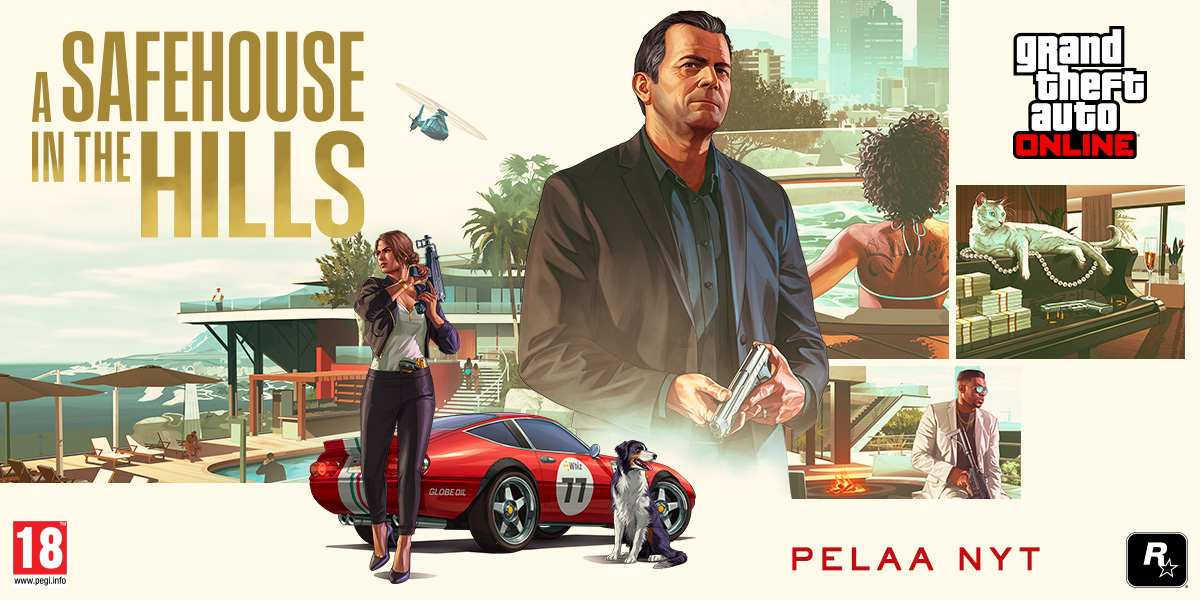Vastaus: Killzone 3 [Hype]
Digital Foundry on pureksinut Killzone 3:n tekniikkaa peräti neljän sivun artikkelin verran. Läpi käydään niin 2D, 3D, Move kuin co-op sekä tietysti suosikkini, MLAA-reunanpehmennystekniikka.
Lähdetään liikkeelle perusasioista, eli siitä miksi Killzone 3:n levyllä on dataa yli 40 gigatavua, kun kakkonen mahtui "vain" 12 gigaan. Asialle on hyvin yksinkertainen selitys: varsinaista pelidataa ei ole kuin 9 gigaa, loput on pelimoottorilla tehtyjä Bink-videoita. Ja itse asiassa sekä 2D:tä että 3D:tä varten on omat videotiedostonsa.
Miksi Guerrilla on päätynyt käyttämään vanhaa Binkiä, nostattaa kysymysmerkkejä ilmaan. Onneksi BD-levyllä tilaa on, joten ovat voineet nostaa bitratea sen verran korkealle, ettei kuvaan tulee palikoitumista kuin harvakseltaan.
There are over 32GB of video sequences stored on the Blu-ray disc, with game data accounting for around 9GB, all powered by a 20MB executable. Interestingly, despite having the option of using Sony's own h264-based PAMF video tech for the cinematics, Guerrilla has opted instead to use Bink - an ancient video codec with often questionable image quality that requires large amounts of bandwidth to achieve acceptable quality.
The cinematics themselves are based on what appear to be offline renders of the game engine in action, so there is a good sense of continuity between video sequences, engine-driven cut-scenes and gameplay. However, even when allocated comparatively massively amounts of bandwidth, video artifacts are clearly seen during playback of fast-action scenes. Detail also tends to smear into macroblocks on darker areas.
Muun muassa God Of War 3:ssa ja LittleBigPlanet 2:ssa käytetty MLAA-reunanpehmennys toimii Killzone 3:ssakin hieman kaksijakoisesti. Paikoitellen se silottaa reunat paremmin kuin mikään (konsolien) näytönohjaimeen perustuva anti-aliasing-tekniikka, mutta jotkut terävät sahalaidat aiheuttavat sille kummiskin ongelmia. Kuvan siloittelun ulkoistaminen Cellin SPU:ille vapauttaa PS3:n grafiikkapiiriltä kuitenkin 18 megatavua muistia muuhun käyttöön, ja osittain tuonkin ansiosta Killzone 3 on edeltäjäänsäkin näyttävämpi.
As it has no access to any depth information, it has specific issues dealing with sub-pixel edges - thin structures in the background are a typical problem area. While Sony's implementation is one of the best available (if not the best), it's still not perfect and the quality of the AA in Killzone 3 is probably the most variable we've seen in all of the MLAA titles released to date.
It's fair to say that there is both good and bad. On the jungle campaign stage, the results are absolutely phenomenal: uncannily good in fact, with virtually no edge-aliasing issues. The MLAA post-processing works beautifully in adding to the organic feel of the level. However, on the more industrial stages, the hard edges and something akin to a specular sheen produces a pixel-crawling effect that is not ideal.
Ohjaustuntumaa on selvästi paranettu kakkososasta, ja enää vasteajat eivät hyppää 200 millisekunnin pahemmalle puolelle ruudunpäivityksen alkaessa köhiä. Itse asiassa ohjain reagoi kaikkeen 113 ms:n viipeellä, tapahtuipa ruudulla mitä tahansa. Ilmeisesti GG on antanut kontrolleille oman "säikeensä", joten se ei kärsi, vaikka PS3:n rauta muuten joutuisikin koville.
The result is that control still feels good even when the tech is under stress, and it also ensures playability isn't too badly affected in the split-screen and 3D modes, which definitely suffer from more dips in performance than the standard single-player campaign mode.
Move-tukikin on toteutettu varsin mallikelpoisesti.
The precise 1:1 nature of Move offers up a finer granularity of control in Killzone 3, resulting in a speedier, more accurate way of aiming at your opponents. Iron sights in particular benefits extremely well from the Move implementation, especially useful bearing in mind that damage levels are tied closely to the area of the body you are shooting.
3D-tuen lisääminen jo valmiiksi teknisesti vaativaan peliin ei ole tullut ihan ilmaiseksi. Renderöintitarkkuus ei ole samaa luokkaa 2D-tilan kanssa, ja ennen kaikkea jotkin efektit luodaan vain neljännestarkkuudella. Vastaavaa menoa on nähty viimeksi GT5:ssä, jossa savu ja vesi tekevät reunoille hetkittäin aikamoisia legopalikoita. Myöskään keskimääräinen ruudunpäivitys ei yllä 2D:n tasolle. Sinällään itse 3D-efekti toimii hyvin ja tuo ennen kaikkea syvyyttä kuvaa.
There are clearly more aggressive LODs at play, resulting in more noticeable pop-in, which is virtually invisible in 2D mode. There are significant issues with some visual effects too. In 2D mode, Killzone 3 processes alpha effects (particles, smoke and the like) using a lower resolution buffer: 640x360 specifically. Once smoothed and scaled, the look is usually very good. However, in stereo 3D mode, these buffers are halved in size too, down to 320x360 per eye. The result is some rather unsightly effects cropping up throughout the game.
Samalta ruudulta pelattavassa co-op-tilassa on melko lailla samat tekniset rajoitteet, mutta ruutua päivitetään sentään tasaisemmin.
Similar to the 3D support, Guerrilla optimises performance by modifying the LODs - simpler models are in play but because the screen is that much smaller, it is difficult to tell the difference. The effect is impressive - frame-rate is very consistent indeed in the split-screen mode, with only the occasional scene offering any real kind of "gotcha" in terms of the performance.
Lyhyenä loppuyhteenvetona DF toteaa Killzone 3:n olevan oikeastaan kaikin tavoin parempi kuin kakkonen. Ja se ei ole ihan vähän sanottu se.
This new sequel is a significant improvement in every area that matters and it's a must buy for PlayStation 3 owners. The single-player campaign is fun and exciting from start to finish and never feels artificially prolonged. New weapons are introduced that are a joy to wield, but crucially, they are never over-used. In addition, some of the extended set-pieces in the game offer an audio-visual experience that propels Killzone 3 way ahead of its competitors...
PS. Onnea sinulle, joka jaksoit lukea tänne asti.
Lähde:
Eurogamer

